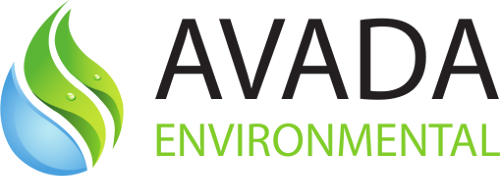Fuel and oil separators/interceptors play a significant role in managing contaminated run-off and spills. If you don’t have the right type of separator or if it’s poorly maintained, serious problems can occur.
The worst outcome is to see fuel or oil contaminate local waterways. The environment suffers of course, but so does your business, as significant fines can be imposed to those who fail to comply with environmental law and prevent pollution.
The Environment Agency has taken legal action against companies that failed to follow the practice guidance on oil separators listed out in the PPG3 document in the past, one recent example being, when Eco Oil was fined £30,000for allowing a spill to occur in 2014. Their separator was overwhelmed by heavy rain, which caused the collected contaminants to overflow into a drain which let out into the River Orwell.
AVADA Environmental has provided a guide about fuel and oil separators to help you make the right choice for your business and avoid costly mistakes.
What is an oil separator?
First of all, some people use the term oil separator and others label them as oil interceptors, to defuse any confusion we want to reiterate that we’re talking about the same infrastructure.
Most separators in use today are single pots with coalescent filters and are used to collect and filter out fuel and oil found in surface water run-off from car parks, fuel station forecourts and vehicle muster points.
Older infrastructures may use a slightly different kind of separator with a 3-chambered tank that filters contaminants into different chambers.
Whichever filtering system is in use the end goal is the same: the contaminants are contained in the separator and the water is released into drains, soakaways or sewers minimising any possible pollution.
When do you need to install a separator?
If your site has hard surfaces that will have oil or fuel contaminating the water run-off, it’s likely you’ll need to install a separator. Here’s some examples of sites that would require a separator:
- Areas where goods vehicles are parked or manoeuvred
- Vehicle maintenance areas
- Roads
- Industrial sites where oil is stored or used
- Refuelling facilities (including commercial and industrial forecourts)
- Small car parks that discharge run-off into a sensitive environment such as a designated nature reserve or waterway
- Car parks that have 50 or more spaces, or are larger than 800m2
- Any other site with a risk of oil contamination.
Use the flow chart below to help you select the appropriate system for your site. More than one separator might be required on larger sites or a site with many activities. You will need to consider the local circumstances and risk factors including:
- The discharge point of your proposed separator
- The environmental sensitivity of your location
- Activities on your site

It’s also advised that Sustainable Drainage Systems’ (SUDS) should be incorporated into the surface water drainage whenever possible.
What are the regulations around fuel/oil separators?
Fuel and oil separator installation and maintenance was regulated by the Environment Agency’s PPG3 document until December 2015. This has been withdrawn in England but still functions as good practice guidance in Northern Ireland, Wales and Scotland.
New regulatory framework will be released as GPP3 in the future. Additionally, the European standard EN858-2 is currently applicable in the UK.
Do you seek further guidance on oil separators?
AVADA Environmental has a specialist team who provide technical assistance in selecting the appropriate separator for your site. Send an online enquiry today if you’d like to ask us any questions on the matter.
